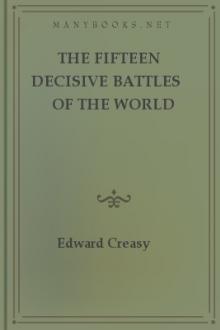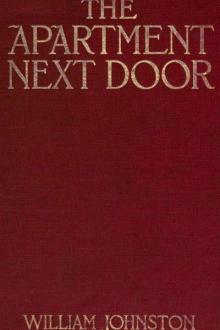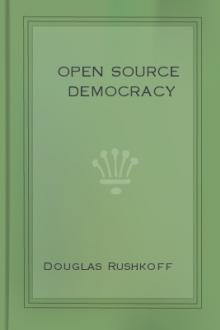The Fifteen Decisive Battles of the World from Marathon to Waterloo by Edward Creasy (reading books for 6 year olds txt) 📕

- Author: Edward Creasy
- Performer: -
Book online «The Fifteen Decisive Battles of the World from Marathon to Waterloo by Edward Creasy (reading books for 6 year olds txt) 📕». Author Edward Creasy
The victory which the Roman general Aetius, with his Gothic allies, had then gained over the Huns, was the last victory of Imperial Rome. But among the long Fasti of her triumphs, few can be found that, for their importance and ultimate benefit to mankind, are comparable with this expiring effort of her arms.
It did not, indeed, open to her any new career of conquest; it did not consolidate the relics of her power; it did not turn the rapid ebb of her fortunes. The mission of Imperial Rome was, in truth, already accomplished. She had received and transmitted through her once ample dominion the civilization of Greece. She had broken up the barriers of narrow nationalities among the various states and tribes that dwelt around the coast of the Mediterranean. She had fused these and many other races into one organized empire, bound together by a community of laws, of government and institutions. Under the shelter of her full power the True Faith had arisen in the earth and during the years of her decline it had been nourished to maturity, and had overspread all the provinces that ever obeyed her sway. [See the Introduction to Ranke’s History of the Popes.] For no beneficial purpose to mankind could the dominion of the seven-hilled city have been restored or prolonged. But it was all-important to mankind what nations should divide among them Rome’s rich inheritance of empire: whether the Germanic and Gothic warriors should form states and kingdoms out of the fragments of her dominions, and become the free members of the commonwealth of Christian Europe; or whether pagan savages from the wilds of Central Asia should crush the relics of classic civilization, and the early institutions of the christianized Germans, in one hopeless chaos of barbaric conquest. The Christian Vistigoths of King Theodoric fought and triumphed at Chalons, side by side with the legions of Aetius. Their joint victory over the Hunnish host not only rescued for a time from destruction the old age of Rome, but preserved for centuries of power and glory the Germanic element in the civilization of modern Europe.
In order to estimate the full importance to mankind of the battle of Chalons, we must keep steadily in mind who and what the Germans were, and the important distinctions between them and the numerous other races that assailed the Roman Empire: and it is to be understood that the Gothic and the Scandinavian nations are included in the German race. Now, “in two remarkable traits the Germans differed from the Sarmatic, as well as from the Slavic nations, and, indeed, from all those other races to whom the Greeks and Romans gave the designation of barbarians. I allude to their personal freedom and regards for the rights of men; secondly, to the respect paid by them to the female sex and the chastity for which the latter were celebrated among the people of the North. These were the foundations of that probity of character, self-respect, and purity of manners which may be traced among the Germans and Goths even during pagan times, and which, when their sentiments were enlightened by Christianity, brought out those splendid traits of character which distinguish the age of chivalry and romance.” [See Prichard’s Researches into the Physical History of Mankind, vol iii. p. 423.] What the intermixture of the German stock with the classic, at the fall of the Western Empire, has done for mankind may be best felt by watching, with Arnold, over how large a portion of the earth the influence of the German element is now extended.
“It affects, more or less, the whole west of Europe, from the head of the Gulf of Bothnia to the most southern promontory of Sicily, from the Oder and the Adriatic to the Hebrides and to Lisbon. It is true that the language spoken over a large portion of this space is not predominantly German; but even in France, and Italy, and Spain, the influence of the Franks, Burgundians, Visigoths, Ostrogoths, and Lombards, while it has coloured even the language, has in blood and institutions left its mark legibly and indelibly. Germany, the Low Countries, Switzerland for the most part, Denmark, Norway, and Sweden, and our own islands, are all in language, in blood, and in institutions, German most decidedly. But all South America is peopled with Spaniards and Portuguese; all North America, and all Australia with Englishmen.
I say nothing of the prospects and influence of the German race in Africa and in India: it is enough to say that half of Europe, and all America and Australia, are German, more or less completely, in race, in language, or in institutions, or in all.”
[Arnold’s Lectures on Modern History, p. 35.]
By the middle of the fifth century, Germanic nations had settled themselves in many of the fairest regions of the Roman empire, had imposed their yoke on the provincials, and had undergone, to a considerable extent, that moral conquest which the arts and refinements of the vanquished in arms have so often achieved over the rough victor. The Visigoths held the north of Spain and Gaul south of the Loire. Franks, Alemanni, Alans, and Burgundians had established themselves in other Gallic provinces, and the Suevi were masters of a large southern portion of the Spanish peninsula. A king of the Vandals reigned in North Africa, and the Ostrogoths had firmly planted themselves in the provinces north of Italy. Of these powers and principalities, that of the Visigoths, under their king Theodoric, son of Alaric, was by far the first in power and in civilization.
The pressure of the Huns upon Europe had first been felt in the fourth century of our era. They had long been formidable to the Chinese empire; but the ascendency in arms which another nomadic tribe of Central Asia, the Sienpi gained over them, drove the Huns from their Chinese conquests westward; and this movement once being communicated to the whole chain of barbaric nations that dwelt northward of the Black Sea and the Roman empire, tribe after tribe of savage warriors broke in upon the barriers of civilized Europe, “velut unda supervenit undam.” The Huns crossed the Tanais into Europe in 375, and rapidly reduced to subjection the Alans, the Ostrogoths, and other tribes that were then dwelling along the course of the Danube. The armies of the Roman emperor that tried to check their progress were cut to pieces by them; and Panonia and other provinces south of the Danube were speedily occupied by the victorious cavalry of these new invaders. Not merely the degenerate Romans, but the bold and hardy warriors of Germany and Scandinavia were appalled at the numbers, the ferocity, the ghastly appearance, and the lightning-like rapidity of the Huns. Strange and loathsome legends were coined and credited, which attributed their origin to the union of “Secret, black, and midnight hags” with the evil spirits of the wilderness.
Tribe after tribe, and city after city, fell before them. Then came a pause in their career of conquest in South-western Europe caused probably by dissensions among their chiefs, and also by their arms being employed in attack upon the Scandinavian nations. But when Attila (or Atzel, as he is called in the Hungarian language) became their ruler, the torrent of their arms was directed with augmented terrors upon the west and the south; and their myriads marched beneath the guidance of one master-mind to the overthrow both of the new and the old powers of the earth.
Recent events have thrown such a strong interest over everything connected with the Hungarian name, that even the terrible name of Attila now impresses us the more vividly through our sympathising admiration of the exploits of those who claim to be descended from his warriors, and “ambitiously insert the name of Attila among their native kings.” The authenticity of this martial genealogy is denied by some writers, and questioned by more. But it is at least certain that the Magyars of Arpad, who are the immediate ancestors of the bulk of the modern Hungarians, and who conquered the country which bears the name of Hungary in A.D.
889, were of the same stock of mankind as were the Huns of Attila, even if they did not belong to the same subdivision of that stock. Nor is there any improbability in the tradition, that after Attila’s death many of his warriors remained in Hungary, and that their descendants afterwards joined the Huns of Arpad in their career of conquest. It is certain that Attila made Hungary the seat of his empire. It seems also susceptible of clear proof that the territory was then called Hungvar, and Attila’s soldiers Hungvari. Both the Huns of Attila and those of Arpad came from the family of nomadic nations, whose primitive regions were those vast wildernesses of High Asia which are included between the Altaic and the Himalayan mountain-chains.
The inroads of these tribes upon the lower regions of Asia and into Europe, have caused many of the most remarkable revolutions in the history of the world. There is every reason to believe that swarms of these nations made their way into distant parts of the earth, at periods long before the date of the Scythian invasion of Asia, which is the earliest inroad of the nomadic race that history records. The first, as far as we can conjecture, in respect to the time of their descent were the Finnish and Ugrian tribes, who appear to have come down from the Asiatic border of High Asia towards the north-west, in which direction they advanced to the Uralian mountains. There they established themselves: and that mountain chain, with its valleys and pasture-lands, became to them a new country, whence they sent out colonies on every side; but the Ugrian colony, which under Arpad occupied Hungary, and became the ancestors of the bulk of the present Hungarian nation, did not quit their settlements on the Uralian mountains till a very late period, not until four centuries after the time when Attila led from the primary seats of the nomadic races in High Asia the host with which he advanced into the heart of France. [See Prichard’s Researches into the Physical History of Mankind.] That host was Turkish; but closely allied in origin, language, and habits, with the Finno-Ugrian settlers on the Ural.
Attila’s fame has not come down to us through the partial and suspicious medium of chroniclers and poets of his own race. It is not from Hunnish authorities that we learn the extent of his might: It is from his enemies, from the literature and the legends of the nations whom he afflicted with his arms, that we draw the unquestionable evidence of his greatness. Besides the express narratives of Byzantine, Latin, and Gothic writers, we have the strongest proof of the stern reality of Attila’s conquests in the extent to which he and his Huns have been the themes of the earliest German and Scandinavian lays. Wild as many of these legends are, they bear concurrent and certain testimony to the awe with which the memory of Attila was regarded by the bold warriors who composed and delighted in them.
Attila’s exploits, and the wonders of his unearthly steed and magic sword, repeatedly occur in the Sagas of Norway and Iceland; and the celebrated Niebelungen Lied, the most ancient of Germanic poetry, is full of them. There Etsel or Attila, is described as the wearer of twelve mighty crowns, and as promising to his bride the lands of thirty kings, whom his irresistible sword has subdued. He is,





Comments (0)